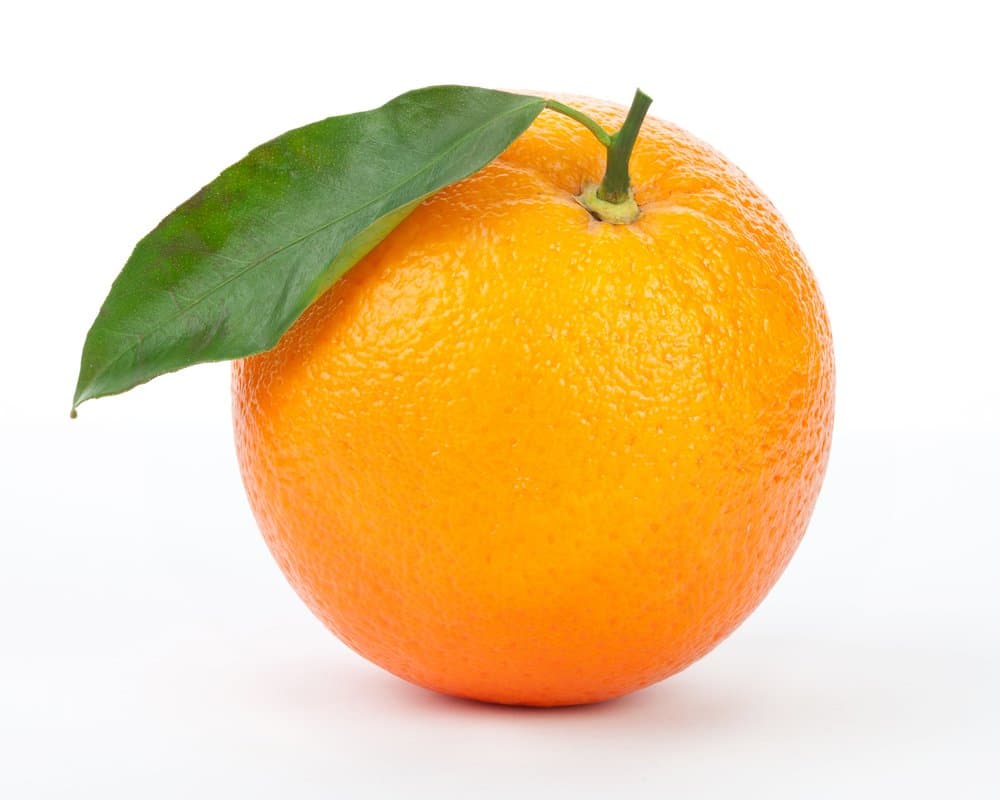This graphic from Greatist illustrates how many grams of sugar are in fruit. However, this information is misleading. Have you ever seen those charts that compare certain fruits to sugar packets? They explain that eating an orange is basically the same as eating 9 sugar packets. If you’re watching your sugar and carbohydrate intake, that information can be somewhat startling, and if you don’t understand the way fruit is broken down in your body, that information is also VERY misleading. As the infographic to the right shows, eating a serving of oranges is like eating 8 1/2 packets of sugar. So for some people, they think that they might as well skip the orange and reach for the treat that they really want, but before you reach for the Oreos, we want to teach you the difference between sucrose (table sugar) and fructose (the sugar in fruits & other organic foods).
Have you ever seen those charts that compare certain fruits to sugar packets? They explain that eating an orange is basically the same as eating 9 sugar packets. If you’re watching your sugar and carbohydrate intake, that information can be somewhat startling, and if you don’t understand the way fruit is broken down in your body, that information is also VERY misleading. As the infographic to the right shows, eating a serving of oranges is like eating 8 1/2 packets of sugar. So for some people, they think that they might as well skip the orange and reach for the treat that they really want, but before you reach for the Oreos, we want to teach you the difference between sucrose (table sugar) and fructose (the sugar in fruits & other organic foods).
The Sugar in Fruit
Fruit is made up of water, sugar, fiber, vitamins and minerals and more! The sugar in fruit is called fructose, not to be confused with high fructose corn syrup. Fructose is sugar in its natural form from plant sources. Fructose is much different than table sugar which is also known as sucrose. Fructose works much differently in your body than table sugar does. When you eat a piece of fruit, your body takes time to start breaking it down. Because it takes time to break fruit down, your body does not release insulin when you are eating fructose.
Check Out: Splenda, Not So Splendid
Sucrose is made up of one part fructose and one part glucose, glucose stimulates the rapid release of insulin to manage your blood sugar levels. This rapid release of insulin can be problematic for people trying to lose weight because high levels of insulin trigger your liver to start storing fat. This spike in insulin can also cause an increase in your appetite making it difficult to avoid binge eating. Instead of just looking at grams of sugar in foods when trying to decide what you should eat, it’s important to consider ingredients (what is it sweetened with) and how much that food will raise your blood sugar (otherwise known as glycemic load).
Glycemic Index and Glycemic Load
The glycemic index was created as a way to see how certain foods are broken down after being eaten. GlycemicIndex.com explains glycemic index as, “a ranking of carbohydrates on a scale from 0 to 100 according to the extent to which they raise blood sugar levels after eating. Foods with a high GI are those which are rapidly digested and absorbed and result in marked fluctuations in blood sugar levels. Low-GI foods, by virtue of their slow digestion and absorption, produce gradual rises in blood sugar and insulin levels, and have proven benefits for health.” The glycemic load of a food refers to how many points it will likely raise your blood sugar by after eating it. Remember that the higher your blood sugar goes, the more insulin you will release. Let’s look at it this way, let’s say you are in the kitchen and you are looking for a snack. You can either choose from an orange or a Fruit Roll Up. Here’s how your choices break down when it comes to the way they affect your insulin.

By eating an orange, you are getting more grams of food, plus fiber and vitamins what will help you feel full and energized. Not to mention, the orange will have little affect on your blood sugar. If you eat Fruit Roll-Ups you get a smaller serving and you will likely be hungry soon because of the insulin spike you’ll experience after eating them. As you can see from the graphic, both have about the same amount of sugar by grams, but the difference in the sugar comes down to fructose v. sucrose. The food that contains fructose, in this case the orange, is a much better option. The food that contains sucrose, in this case the Fruit Roll-Ups, affects your body nearly 4 times more than the orange. It’s easy to see that not all sugar is created equally.
The Takeaway
When you’re counting calories, carbohydrates and sugars, it’s easy to get fruit paranoid. “I better not eat that, it’s too high in sugar.” This paranoia is based on a misunderstanding of blood sugar. You should not feel guilty for eating fruit in moderation. It contains essential nutrients that help your body digest it over a long period of time. Fruit is always better than fruit snacks, even if they contain the same amount of sugar. Likewise, fruit is always better than other sugary foods. The sugar in fruit is not bad for you. In fact, your body needs all of the amazing nutrients fruit has to offer!

